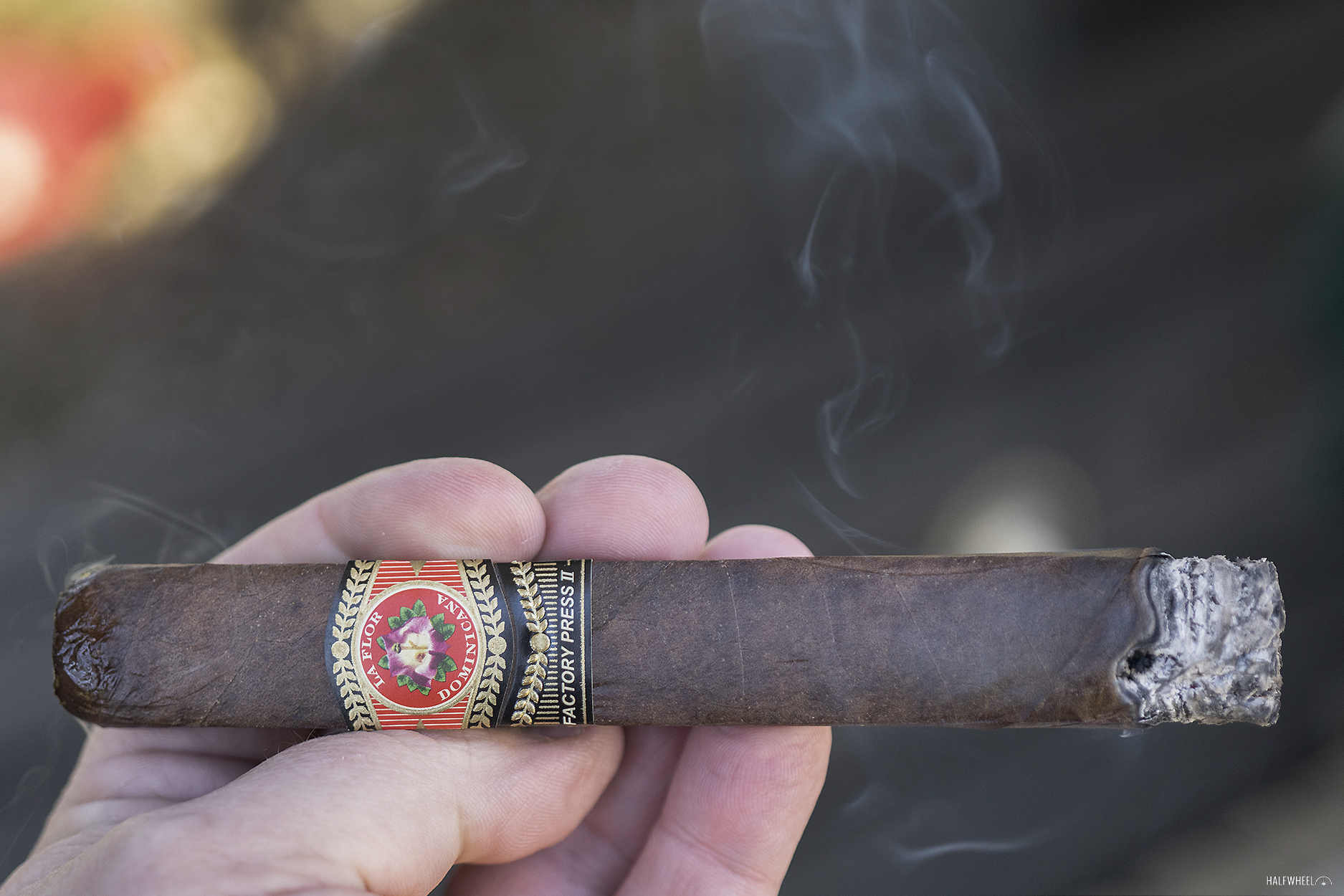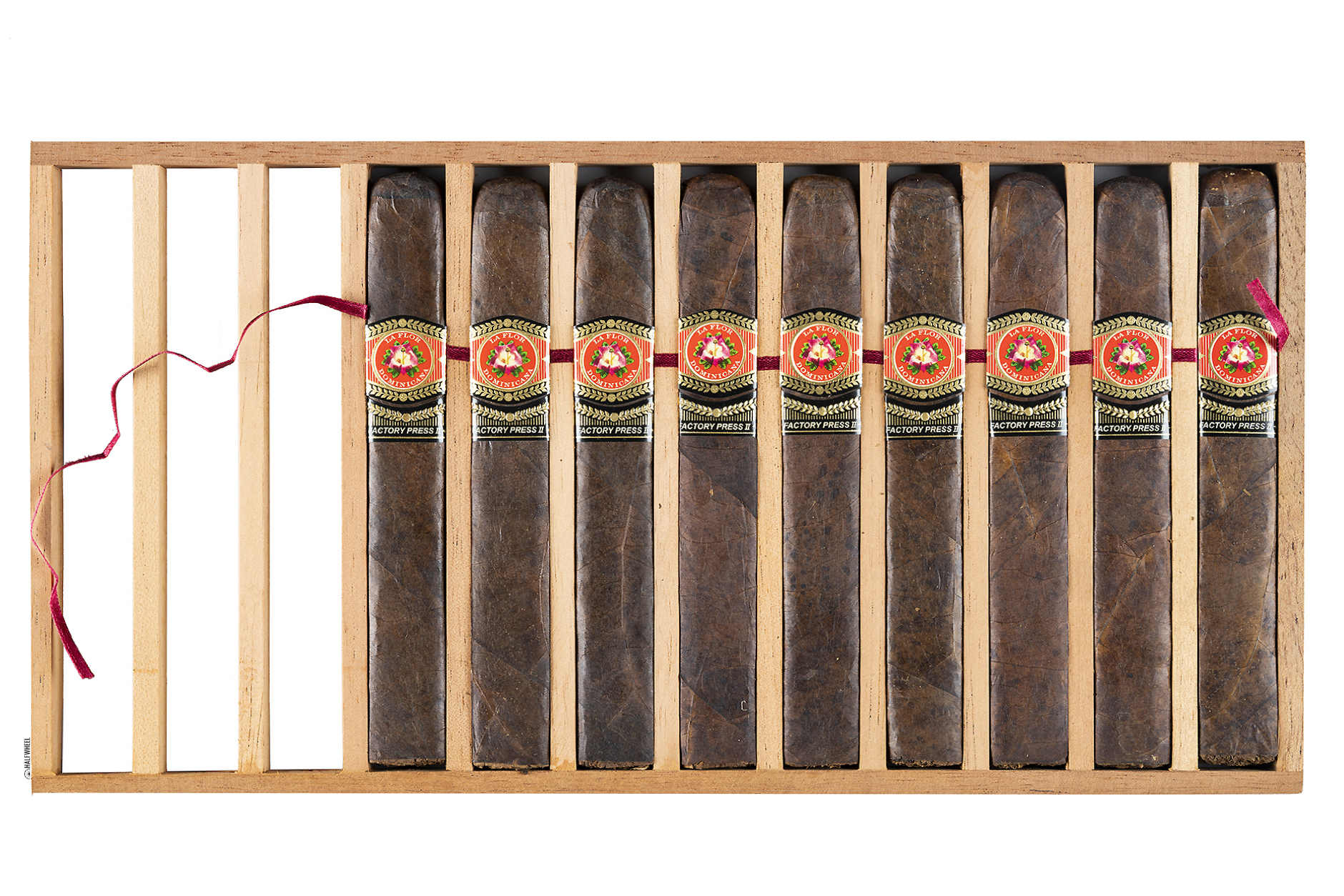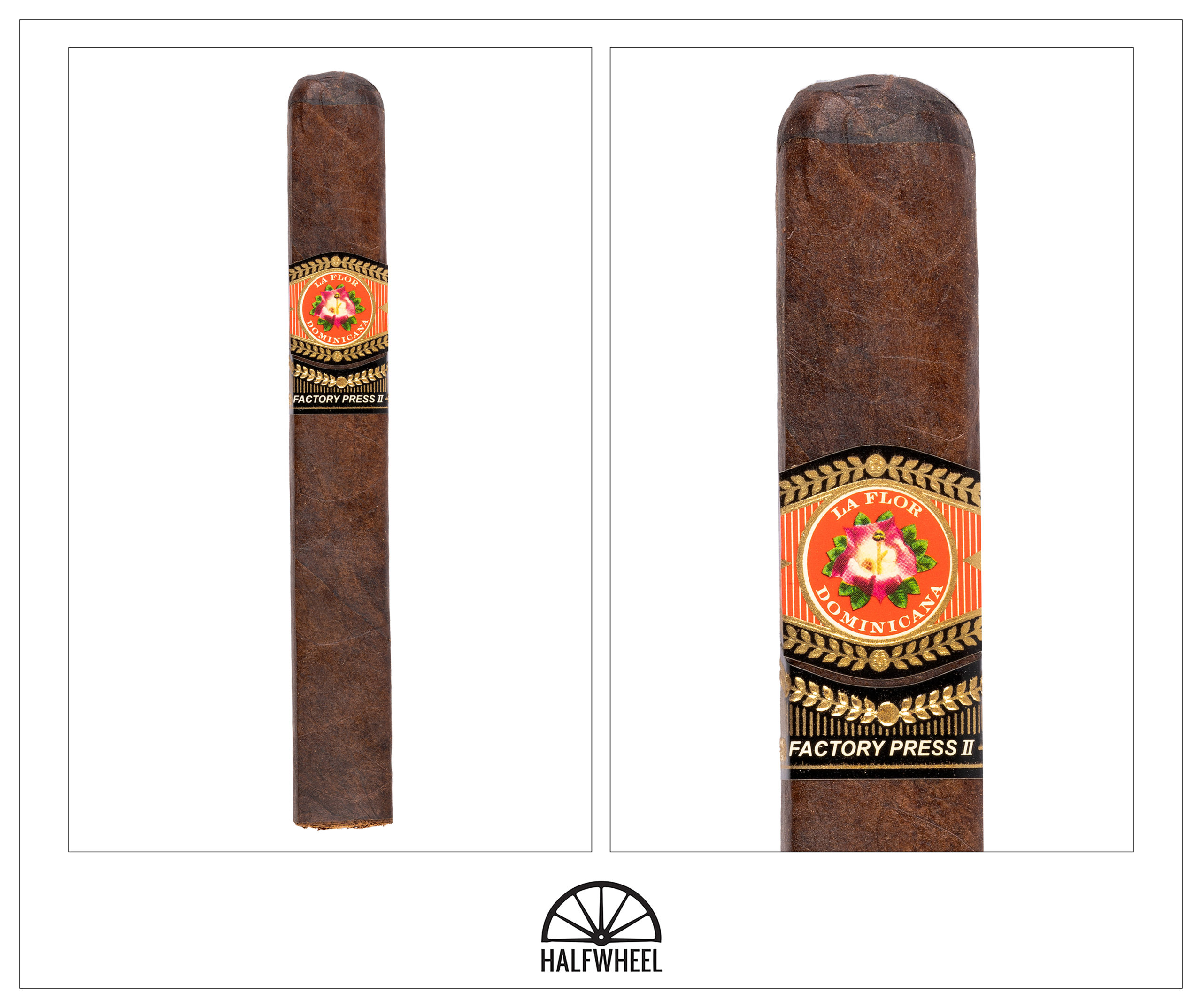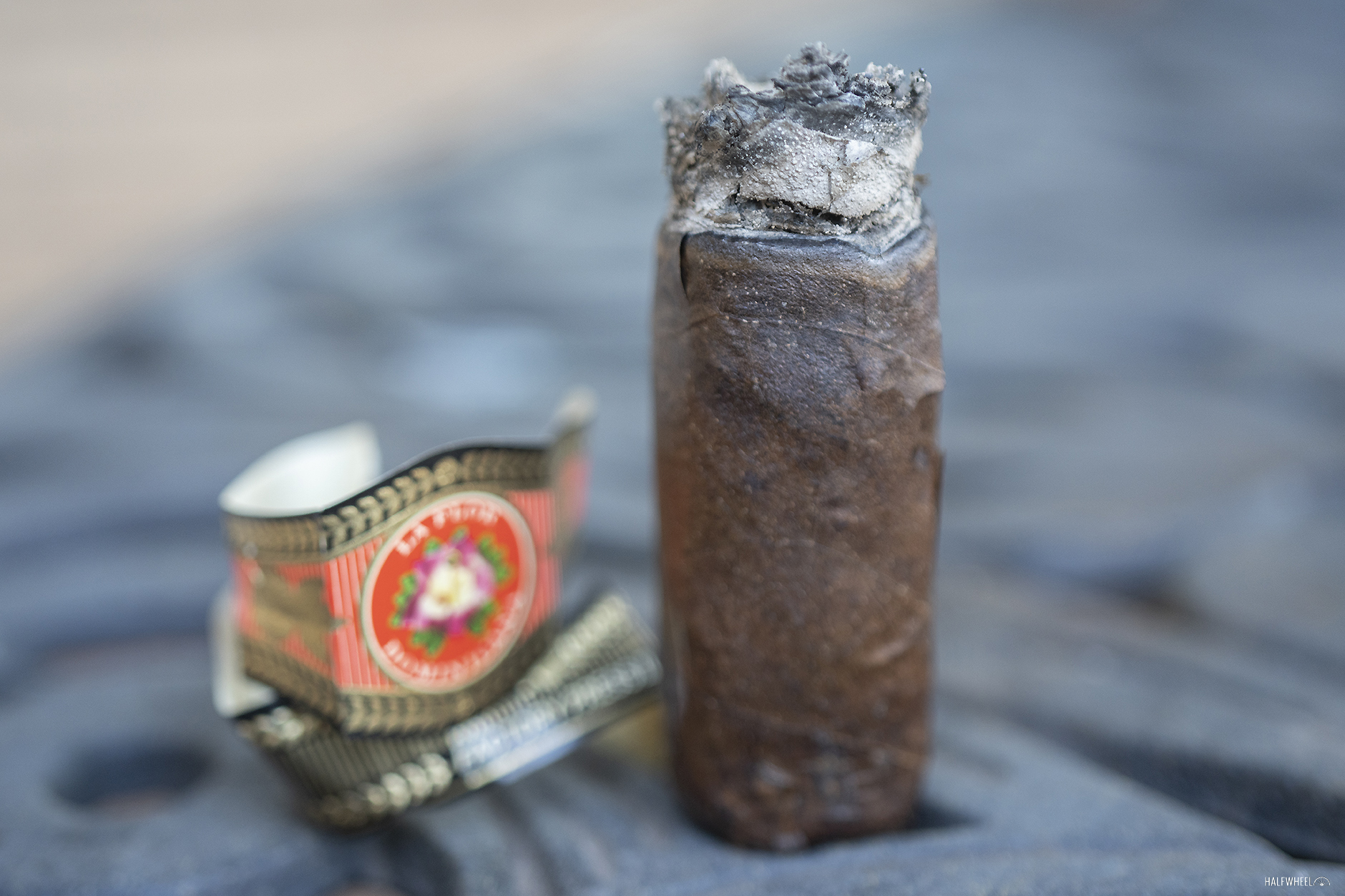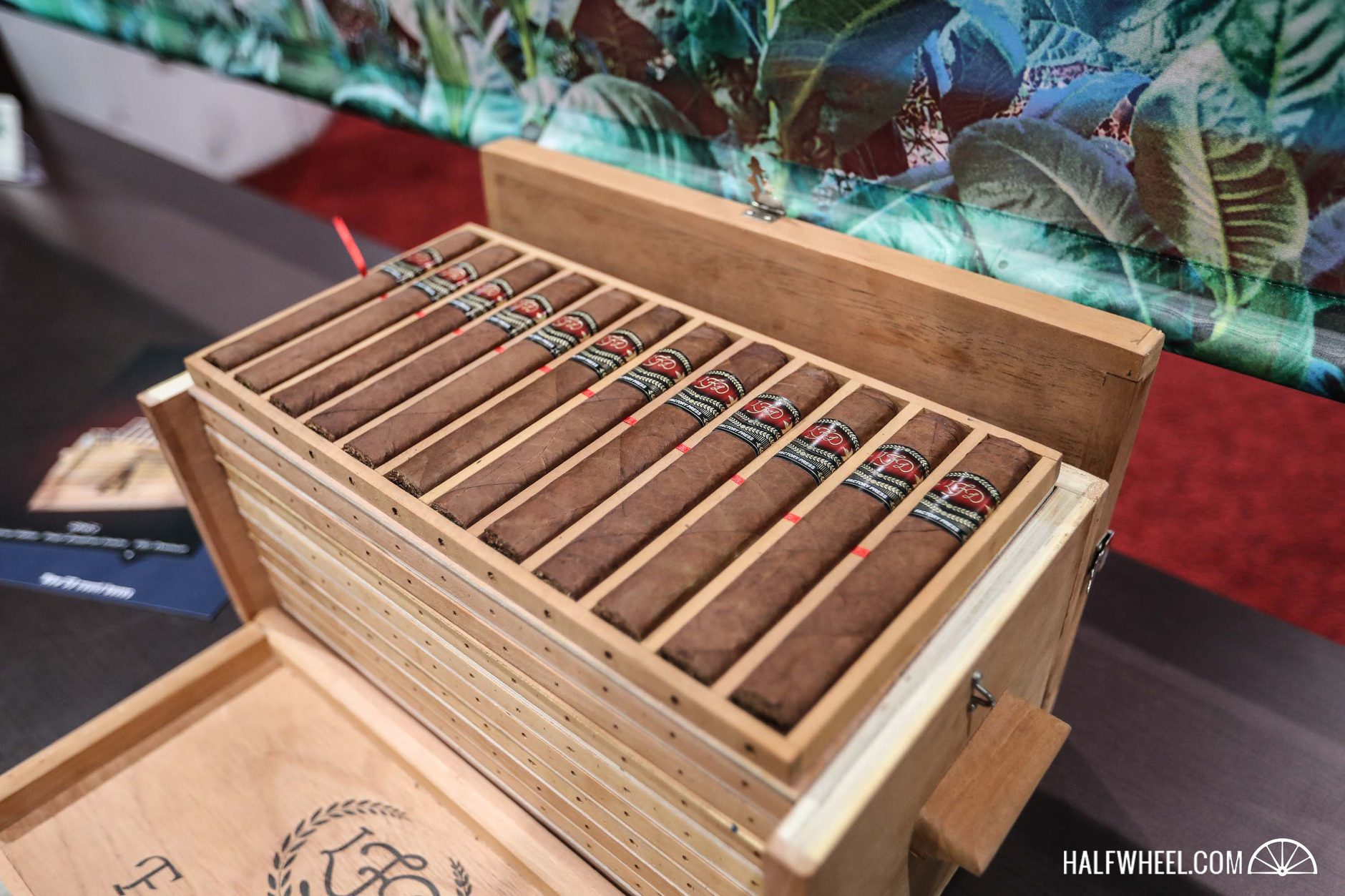In 2005, La Flor Dominicana released the first of what would become one of the company’s longest-running series during the 2005 Retail Tobacco Dealer’s Association (RTDA) Convention and Trade Show, a precursor to the PCA Convention & Trade Show.
Note: Since halfwheel launched in 2012, we have started off each new year with a week of reviews that are different from the other parts of the year. Rather than reviewing new cigars, we try to find cigars people might consider a holy grail cigar. These reviews are scored the same as our regular reviews, though oftentimes we are only able to procure one of the cigars, so many of these reviews are based on smoking one cigar instead of our normal three cigars per review. You can read more Holy Grail Week reviews by clicking here. — CM.
Named Factory Press, the cigars in the series take their monikers from the distinctive shape that is characterized by an extreme box-press on the top of the cigar that is a result of the way they are left packaged in trays until a customer purchases one.
La Flor Dominicana owner Litto Gomez had this to say about the original idea behind the Factory Press Series:
For years I have been fascinated with our cigar box-pressing system. Many times I have thought how great it would be to share the process with our fans. That is why I’m offering a very special cigar shipped in the actual factory press. Because the concept is so special we needed to blend a cigar that will be totally unique to La Flor Dominicana. We started by obtaining Connecticut broadleaf wrappers that have been aging for several years. The filler is Corojo aged from the very first crop our farm produced in 1997, while the binder is a Sumatra seed (also grown on our farm) put to age for the last eight years.
While the first release was made up of a Connecticut broadleaf wrapper, Sumatran binder and Dominican fillers, the second addition to the series was a different blend. Factory Press II incorporated a Nicaraguan oscuro wrapper, a Sumatran binder and filler tobaccos from the Dominican Republic. As with every incarnation of the Factory Press Series so far, the Factory Press II was sold in the actual trays they were originally packaged in, with 12 cigars in each tray and 10 trays in a master case, meaning a total of 120 cigars for each box.
There have been seven different releases in the Factory Press Series so far:
- La Flor Dominicana Factory Press I (6 1/2 x 60) — 2005
- La Flor Dominicana Factory Press II (6 1/4 x 54) — 2006
- La Flor Dominicana Factory Press Limitado (6 1/4 x 54) — 2007*
- La Flor Dominicana Factory Press III (6 1/4 x 58) — 2008
- La Flor Dominicana Factory Press IV (6 1/2 x 60) — 2011
- La Flor Dominicana Factory Press Limitado (6 1/4 x 60) — 2013
- La Flor Dominicana Factory Press (2017) (6 1/2 x 58) — 2017
*This release also has been characterized as “Limited Release Factory Press II”
- Cigar Reviewed: La Flor Dominicana Factory Press II
- Country of Origin: Dominican Republic
- Factory: Tabacalera La Flor S.A.
- Wrapper: Nicaragua (Oscuro)
- Binder: Undisclosed (Sumatra)
- Filler: Dominican Republic
- Length: 6 1/4 Inches
- Ring Gauge: 54
- Vitola: Toro Extra
- MSRP: $12 (Box of 120, $1440)
- Release Date: 2006
- Number of Cigars Released: Undisclosed
- Number of Cigars Smoked For Review: 1
Dark and imposing, the La Flor Dominicana Factory Press II is a sight to behold, especially when you pull it from its spot in the tray. Even after all of this time, the wrapper is a gorgeous espresso brown color that is smooth to the touch and features a touch of oil. In addition, the press lines are sharp and the cigar is just short of rock hard when squeezed. The aroma from the wrapper is a combination of earth, manure, hay and generic nuts, while the foot includes notes of cinnamon, apple peel, leather, cedar and cocoa nibs. Finally, after a v-cut the cold draw brings flavors of cinnamon, apple peel, leather, cedar, dark chocolate and a bit of vanilla bean sweetness.
The first few puffs of the La Flor Dominicana Factory Press II are full of both earth and caramel sweetness, both of which are quickly replaced as top flavors by anise and leather tack. Additional notes of powdery cocoa nibs, aged cedar, hay, sourdough bread and a touch of citrus flit in and out, while there is a nice amount of spice on my tongue. The retrohale is full of vanilla bean sweetness, seemingly pulled over from the cold draw, along with a small amount of black pepper that is increasing as the first third burns down. Construction-wise, the draw is excellent after a v-cut and there is plenty of thick, white smoke, and while the burn is far from razor-sharp, it is also doesn’t need to be touched up. Flavor and body are both medium but rising while the strength ends the first third just under medium.
A distinct floral note, a flavor I have not picked up before now, becomes the leading flavor during the second third of the Factory Press II. Secondary flavors of creamy cedar, gritty earth, hay, dark chocolate, anise and brewed coffee flit in and out, and while there is still a touch of spice present on my tongue, it is nowhere near as strong as it was in the first third. The retrohale still features a nice vanilla bean sweetness—albeit less than before—as well as a small amount of black pepper. In terms of construction, both the draw and smoke production continue to impress, while the burn evens up nicely. Intensity-wise, flavor and body are hand-in-hand just above the medium mark, while the strength easily hits a solid medium by the time the second third comes to an end.
The profile shifts in the final third and a salted popcorn note takes the top spot, followed by flavors of leather, earth, cedar, citrus peel, cocoa nibs, hay and a touch of a floral note. There is less vanilla bean sweetness on the retrohale—it almost disappears totally by the time the cigar comes to an end—but the amount of black pepper remains about the same. There continues to be no issues with either the draw or the smoke production, and while the burn has some minor problems with cracking—see below for details—it is not bad enough to need any attention from my lighter until the very end. Flavor and body both end the cigar at medium-full, while the strength takes a pretty large step up in the final puffs to hit medium-full as well, which did end up affecting the overall balance at the last part of the final third.
Final Notes
- I have to say, I have no complaints about how this cigar feels in my mouth when smoked in the normal way—i.e. flat side with the main portion of the band facing up— but I absolutely love how it feels when I turn it 180 degrees. At that point, the round side is pressing against your top lip while your bottom teeth lay perfectly on the flat side.
- Box-pressed cigars are nothing new, of course, but the difference between most other pressed cigars and La Flor Dominicana’s Factory Press Series is that the latter cigars never come out of the trays until a consumer buys one, whereas other box-pressed cigars are taken out of the presses within a few hours to a couple of days depending on how extreme the manufacturer wants the shape to be.
- Alec Bradley recently released the Triology, a triangle-press cigar that is packaged in a similar spirit to the Factory Press. It comes in boxes designed to look like the cigar molds used to create the cigars.
- In March 2018, we published a review of a cigar we believed was the 2017 La Flor Dominicana Factory Press which turned out to be a different version released for FDA purposes. The review of the actual 2017 La Flor Dominicana Factory Press can be found here.
- This series has one of the most convoluted naming schemes of any I have seen in a while: the first two cigars were named Factory Press I and Factory Press II, but the third version was named Factory Press Limitado. The next two releases resumed using Roman numerals with monikers of Factory Press III and Factory Press IV, but the sixth addition returned to the Factory Press Limitado name—with no number or date differentiation—before the most release in the series so far dropped all numbers and was just named Factory Press.
- Although it did not have a significant impact on the burn or the draw, the wrapper did split right along the edge of the box-press for a short ways on the top of the cigar at the end of the second third. Thankfully, it stopped at the end of a major vein.
- Other than the above, I had very few construction issues with this cigar: the burn only needed to be corrected once in the final third, there was plenty of thick smoke and the draw was excellent from the first puff to the last.
- Cigars for this review were purchased by halfwheel. We paid $225 for 10 cigars on the secondary market last year.
- The final smoking time was one hour and 42 minutes.
While a number of La Flor Dominicana’s blends have knocked me on my butt when fresh—the Double Ligero and Ligero Cabinet Oscuro lines instantly come to mind—I have always felt that in general, the company’s cigars have a good chance of dropping some of that overt strength and picking up some nuance and complexity with age. The Factory Press II is a great example: it was quite strong when it was first released—I remember regretting smoking one during the first few years that I started enjoying cigars—with a smooth but fairly linear dark chocolate profile. While some strength is definitely still present at this point in its life, any major issues with it affecting the balance are relegated to the last part of the final third. In its place is a wonderful profile that features major changes between thirds, including a floral note that came out of nowhere to dominate the second third and stuck around for quite a while. In the end, the Factory Press II is a testament to La Flor Dominicana’s tobacco and blending, and one that I would say it still has quite a bit of gas left in its tank.

